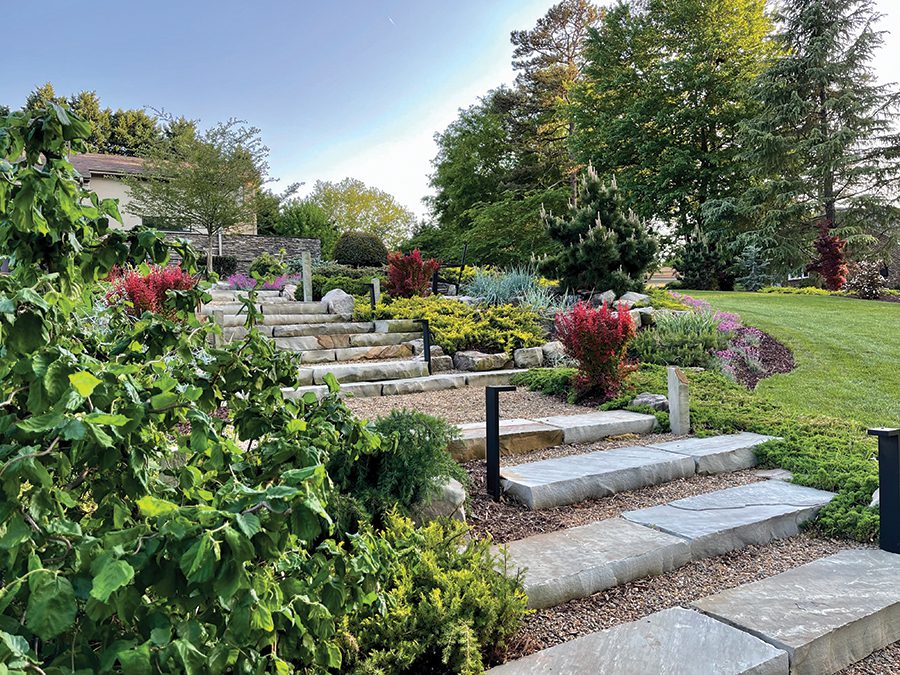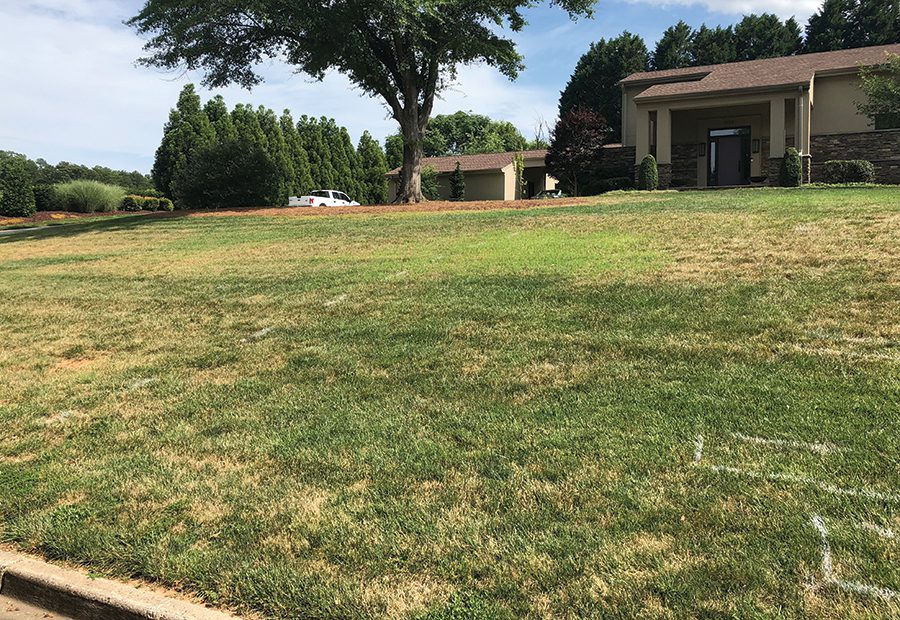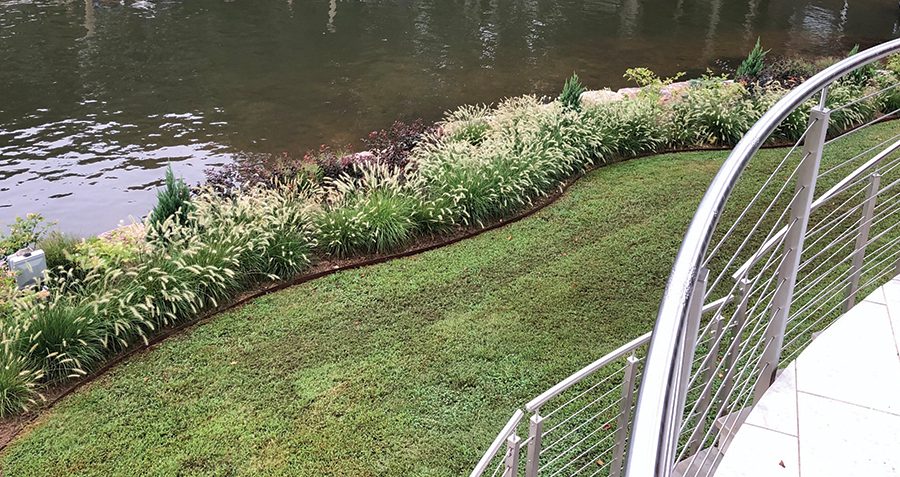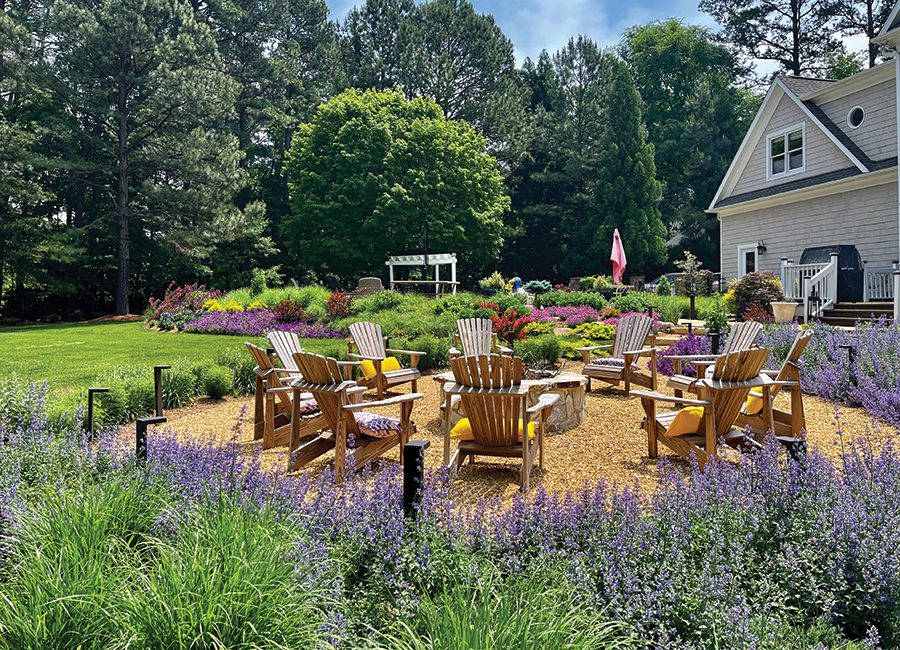Rethink your lawn
February 1, 2023

Reevaluating the need for sprawling turf: 3 tips for creating a lawn by design
by Jay Sifford


This front yard, left, was unusable. The client desired a front garden with a seating area where she could relax with a glass of wine and a book or greet neighbors. The hill is now tamed with staggered stone steps that lead to a seating area surrounded by a pond with a waterfall. The remaining lawn now functions as negative space between garden beds.
This is the time of year when we reevaluate and plan. For gardeners, these dark dreary days of winter are spent poring over plant catalogs, planning spring projects and dreaming of what could be.
Maybe you are planning a new garden bed. But what about your lawn? Most people spend more time, money and effort on their lawns than on all of their other plants combined. By now, we are aware of the ecological implications of a perfect lawn, whether it be exhaust from lawn equipment or runoff from the fertilizers and chemicals required to maintain that perfect green hue. Then comes summer, when most lawns are off-color and crunchy. Perhaps this is also the time of year when we should rethink the need for the sprawling lawns many of us have. Maybe there are other, more imaginative and ecologically sound options.
When meeting with new clients, I generally ask them whether they have a lawn by default or a lawn by design. A lawn by default happens when you don’t know what else to do with your space, or it’s what the neighbors do, or it’s what the homeowners association recommends. None of those are particularly good reasons for having a yard full of turf. A lawn by design is one that fulfills a purpose yet leaves room for a creative and beautiful garden. A lawn by design may include areas for children and pets to romp and play, an impromptu sports field, or an extra entertaining area where tables and chairs can be placed for special events. All of these are valid reasons for having turf.
When evaluating your lawn, determine where those areas are and exactly how much dedicated space you’ll need. Then begin to imagine what the remaining lawn could become. Think about reclaiming your lawn space for other activities, about viewing it as negative space to balance lush planting beds, and about using it for wide paths in areas of lighter foot traffic in lieu of paving or stepping stones.
Reclaiming your lawn
I am a big believer in having multiple outdoor seating areas. Why not reclaim part of your front yard for seating? In many neighborhoods, large front porches no longer exist. What better way to meet and greet neighbors than to have an inviting seating area in the front yard? Land has become so valuable, it’s a shame not to use it to your advantage. A simple garden bench immersed in a new planting bed will do the trick, or you can go big and create a space with multiple chairs, perfect for sharing a glass of beer or wine with neighbors. I have had clients tell me they never knew any of their neighbors until we crafted a front-yard seating area for them to enjoy.


Left: Ornamental fountain grass is juxtaposed with mown turf in a sublime lakeside garden. Right: This lawn functions as both negative space and wide pathways upon which to navigate the garden.
Negative space
You may be one of those gardeners that just can’t help buying one more plant. Lush planting beds can be beautiful, but too much of a good thing can work against the original purpose. In this case, turf can function as negative space to balance those exuberant and full beds. It is especially effective to run larger ornamental grasses up next to a well-maintained turf lawn. The resulting juxtaposition can be sublime.
Turf as paths
In all but the most highly traveled areas of your yard, turf can be used to create winding pathways between planting beds. Using lawn in this way can help slow down and absorb water runoff, making it more environmentally friendly than concrete or asphalt. Whereas the standard width of a sidewalk is 4 or 5 feet, think about going wider, perhaps 8 or even 10 feet, with a turf path. Doing so will allow you to create pleasing curves that will pull the eye through the space. When the eye goes to something pleasant, the body will certainly follow. SP
Jay Sifford is a Charlotte-based landscape designer who specializes in contemporary, Asian and transitional gardens. His work has been featured in Southern Living, Country Gardens and Fine Gardening, as well as Houzz and several books. siffordgardendesign.com